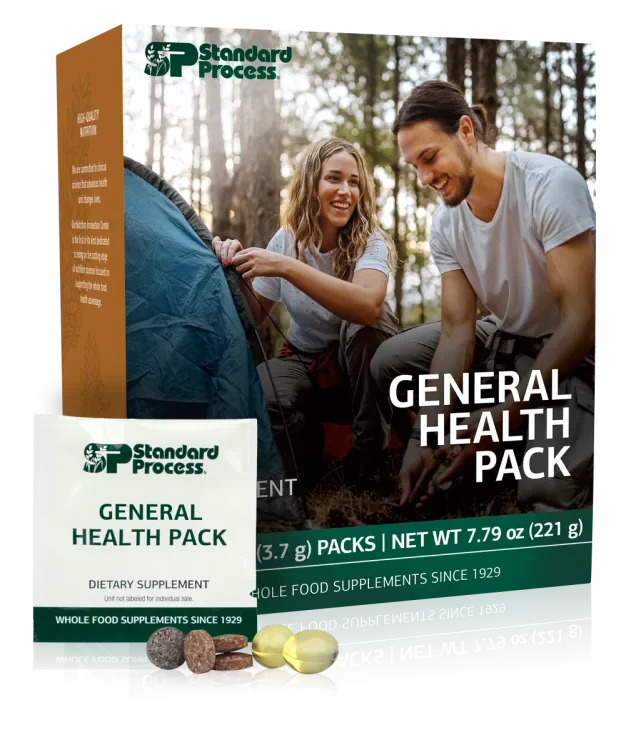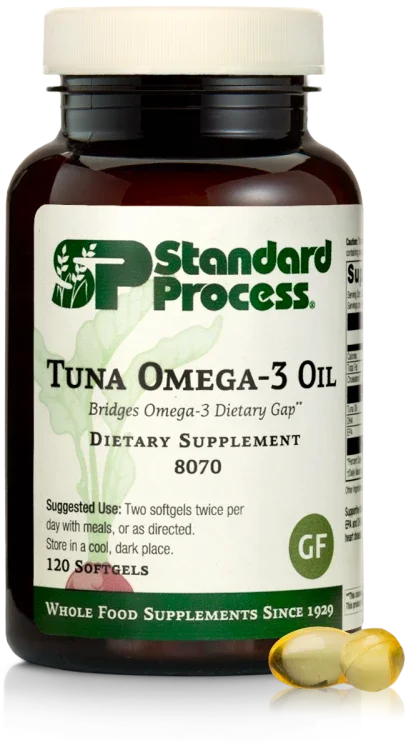Catalyn®
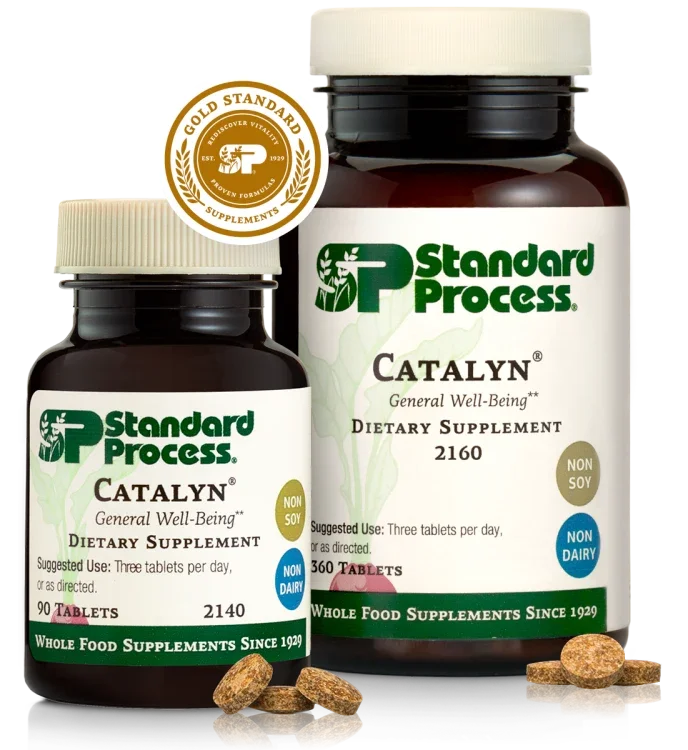
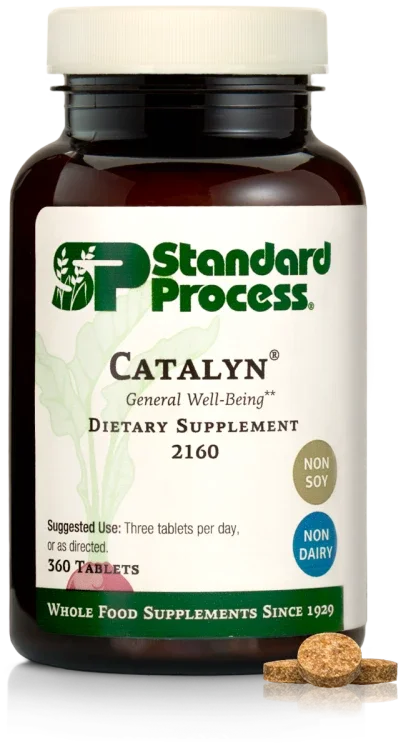
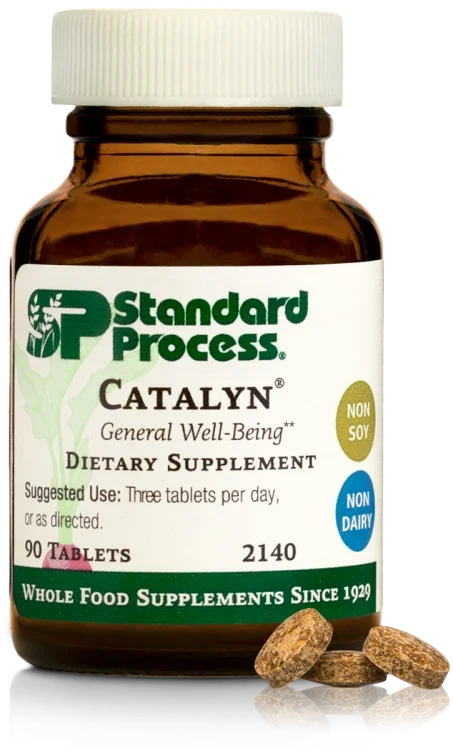
Catalyn®
Catalyn® is the original whole food multivitamin from Standard Process, formulated in 1929 and still trusted today. It provides a balanced blend of vitamins, minerals, and antioxidants sourced from nutrient-rich whole foods to support energy, immune function, skin health, and overall vitality. Catalyn helps fill nutritional gaps and supports foundational health for all ages. Ideal for daily use to promote well-being in a natural, food-based form your body recognizes and uses efficiently.
Catalyn is everything a multivitamin should be, supplying multiple vitamins for complex nutritional supplementation. It is designed to help bridge nutritional gaps in the diet and encourage healthy cell function.* Catalyn is a great source of vitamin D, vitamin B6 and vitamin A, and a good source of thiamin and riboflavin.
Suggested Use:
Three tablets per day, or as directed.
Warning: Keep out of reach of children.
Nutrients & Ingredients
Each Serving Size (3 Tablets) contains: Total Carbohydrate <1 g, Vitamin A 360 mcg RAE, Vitamin C 4 mg, Vitamin D 7.8 mcg, Thiamin 0.2 mg, Riboflavin 0.2 mg, Vitamin B6 1 mg. Proprietary Blend 765 mg: Defatted wheat germ, calcium lactate, organic carrot, organic sweet potato, nutritional yeast, bovine adrenal, bovine liver, magnesium citrate, bovine spleen, ovine spleen, bovine kidney, organic pea vine juice powder, organic alfalfa (aerial parts) juice powder, organic oat flour, sunflower lecithin, organic shiitake mushroom powder, organic reishi mushroom powder, and rice bran. Other Ingredients: Honey, glycerine, acacia fiber, ascorbic acid, calcium stearate, modified corn starch, pyridoxine hydrochloride, vitamin A palmitate, thiamin hydrochloride, riboflavin, and cholecalciferol. Contains: Wheat.
Please consult the product packaging label for the most accurate product information.
References:
1. Services USDoAaUSDoHaH. 2020-2025 Dietary Guidelines for Americans. 2020.
2. Lee-Kwan SH, Moore LV, Blanck HM, Harris DM, Galuska D. Disparities in State-Specific Adult Fruit and Vegetable Consumption - United States, 2015. MMWR Morbidity and mortality weekly report. 2017;66:1241-7.
3. National Institute of Health, Office of Dietary Supplements. https://ods.od.nih.gov/factsheets
4. Bowman B, Russell R, eds. Present Knowledge in Nutrition. 9th ed. Washington, DC: International Life Sciences Institute; 2006.
5. Wardlaw GM, Hampl JS, DiSilvestro RA. Perspectives in Nutrition. 6th edition. New York, NY: McGraw Hill Higher Education; 2004.
6. Sizar O, Givler A. Vitamin D Deficiency. [Updated 2019 Jun 4]. In: StatPearls [Internet]. Treasure Island (FL): StatPearls Publishing; 2019 Jan-. Available from: https://www.ncbi.nlm.nih.gov/books/NBK532266/.
7. Bikle DD. Vitamin D Metabolism, Mechanism of Action, and Clinical Applications. Chem Biol. 2014 March 20; 21(3): 319–329.
8. Dietary Reference Intakes for Thiamin, Riboflavin,Niacin, Vitamin B6, Folate, Vitamin B12, Pantothenic Acid, Biotin, and Choline.” 1998, doi:10.17226/6015.

